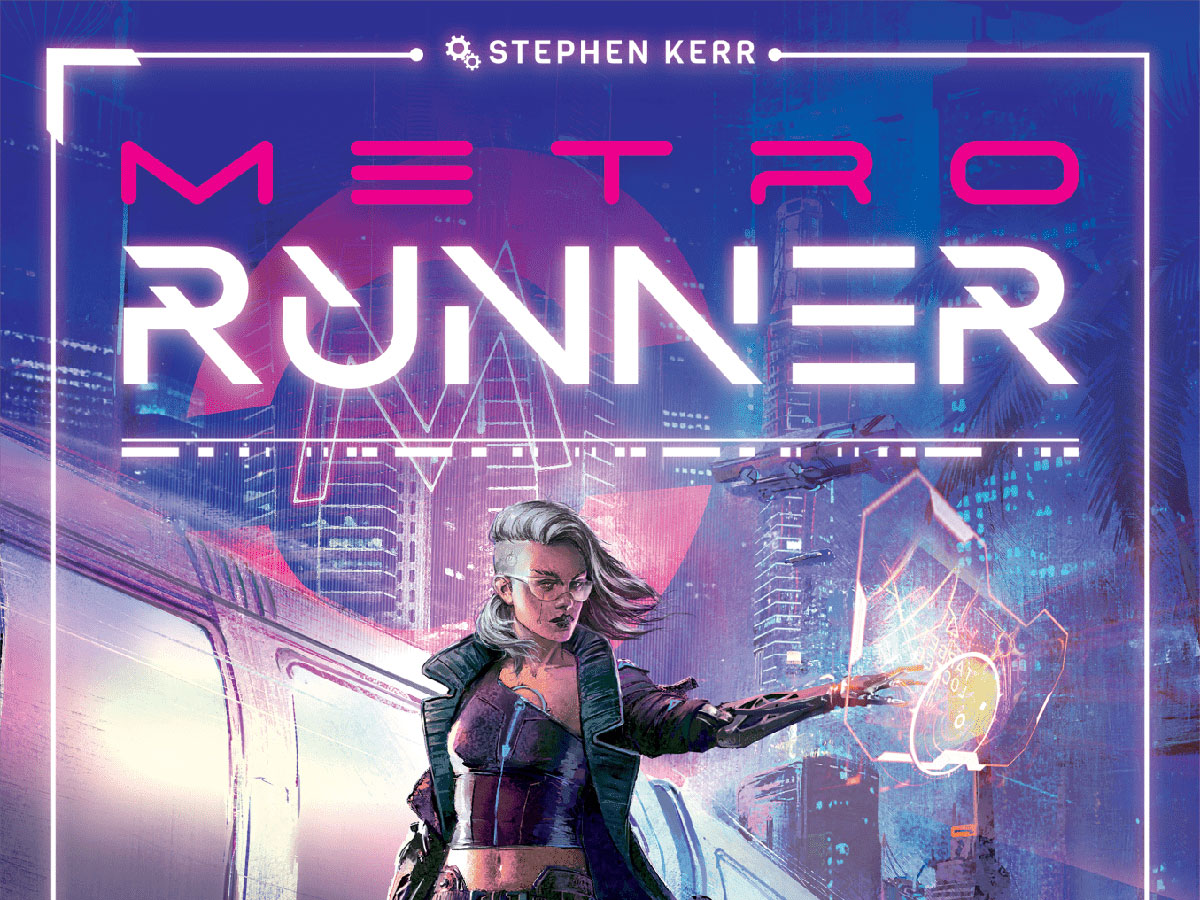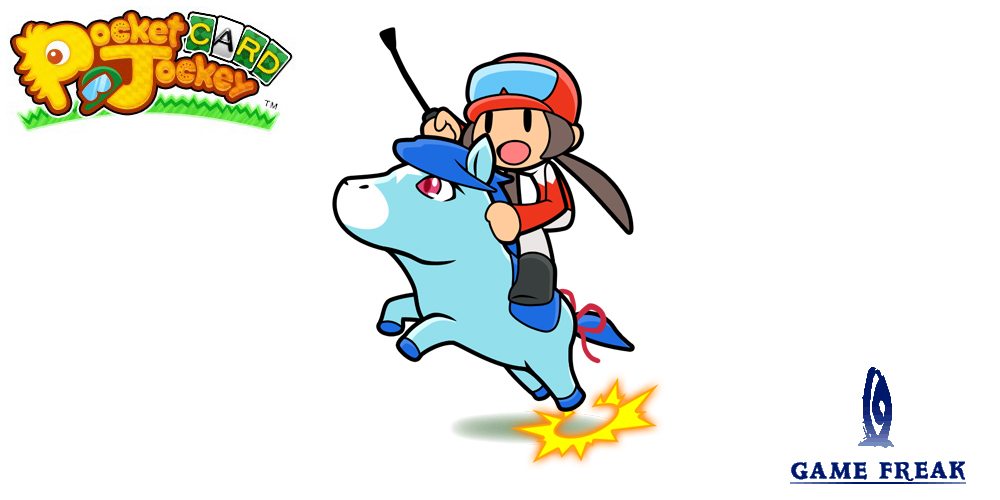Times are tough in Mirror City, with a corrupt government and greedy corporations. Hop on the Metro and gather intel and resources to achieve notoriety in this emerging new regime.
What Is Metrorunner?
Metrorunner is a rondel-driven game for 1 to 5 players, ages 14 and up, and takes about 30 to 90 minutes to play depending on player count. It’s currently seeking funding on Kickstarter, with a pledge level of $48 for a copy of the base game, or $60 to get the expansion and some special metal tiles included. I think Metrorunner could be fine for kids younger than 14 if they’ve played some worker placement and resource management games; the jobs do range from not-entirely-legal (“publicize data breach”) to definitely-illegal (“establish laundering front”) but it’s all fairly abstracted, with just the card’s title and illustration to lend some flavor to it.
Metrorunner was designed by Stephen Kerr and published by Thunderworks Games, with illustrations by Ignacio Bazan Lazcano, Ariel Anabitarte, Nicolas Zacaria, and Matias Traberg.
New to Kickstarter? Check out our crowdfunding primer.
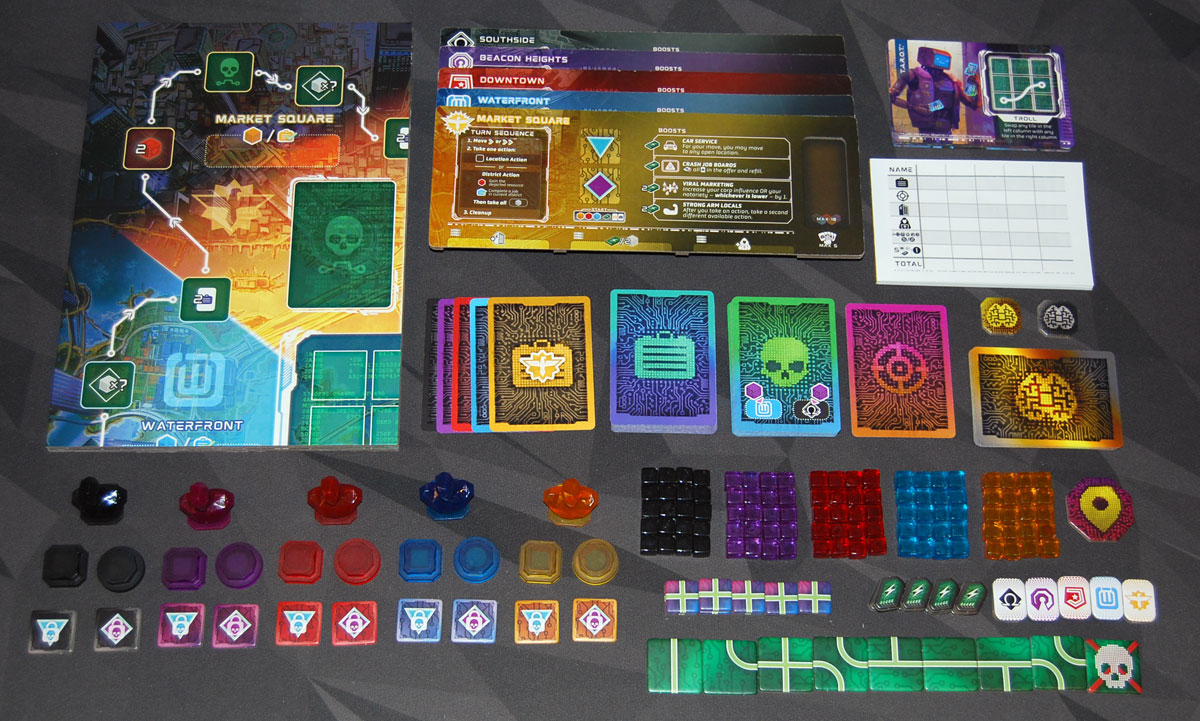
Metrorunner Components
Note: My review is based on a prototype copy, so it is subject to change and may not reflect final component quality.
Here’s what’s included:
- Double-sided game board
- 10 Character cards
- 5 Runner boards
- 5 Runner pawns
- 5 Influence markers
- 5 Notoriety markers
- 10 Upgrade tokens (5 Alpha, 5 Beta)
- 100 Resource cubes (20 each in 5 colors)
- 20 Credit tokens
- 9 PANOP tiles
- 10 Brute Force tokens
- Start Player token
- 40 Job cards
- 5 Starting Job cards
- 30 Network cards
- 4 Contract cards
- 10 Contract tokens
- Scorepad
- 20 AI cards
- 2 Rogue tokens
The board is double-sided for the different player counts, with a few more spaces available on the side for 4–5 players. It’s divided into 5 districts, with a Metro line making a loop around the board depicting different actions for each space. The center has a 3×3 grid for the PANOP puzzle, and along the bottom are tracks for influence and notoriety. You can make out a top-down view of the city in the background, but the focus is on the action spaces, and the five districts are brightly colored and also have their own icons to make them easy to distinguish.
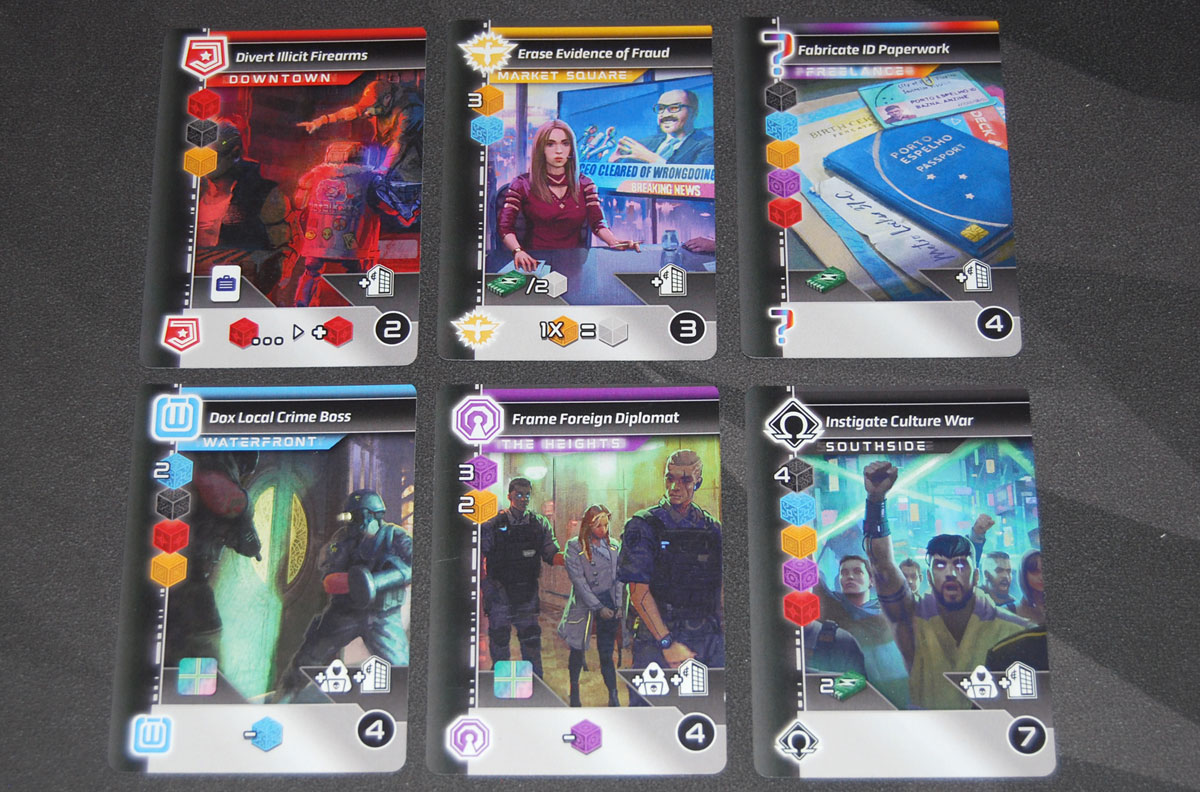
The job cards have unique titles and illustrations, all depicting the various tasks you can take on to earn some influence and other rewards. The layout of the cards is a little funny to me, with reward icons split between the left and right side of the card even though you get everything when you complete a job. As I mentioned above, a lot of the jobs seem illicit in nature, though you’re just as likely to expose corruption as you are to start a bit of your own.

Character cards are oversized cards, and each has a character bio on the back, and your hacking ability on the front. These cards really didn’t need to be so big, considering the actual game-relevant information on them, but it gives more room to show off the character portraits—cybernetically enhanced people, bots, and more.
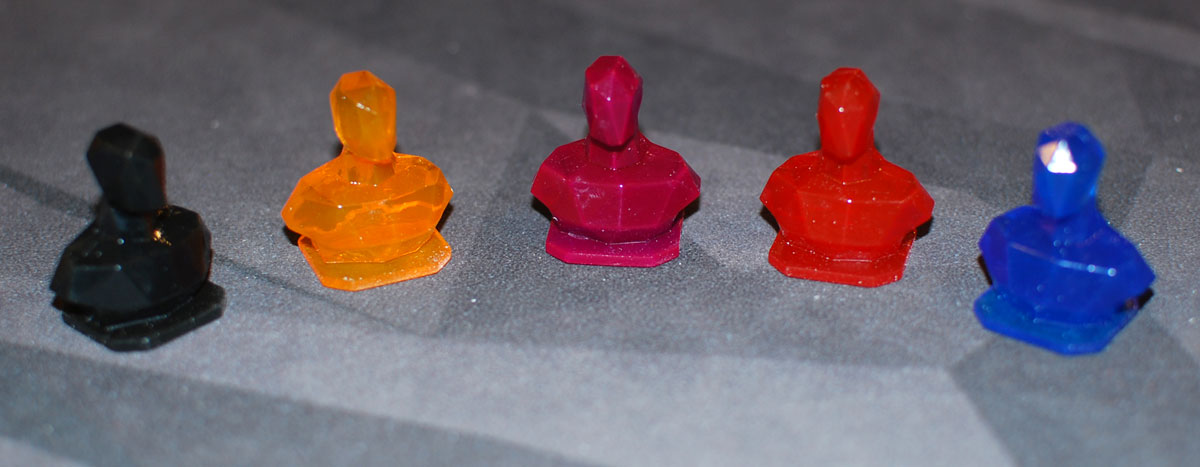
The runner pawns are fun: translucent plastic busts with a low-polygon 3D look to them. The influence and notoriety markers are also plastic tokens (square and round) that stack. They’re fancier than just cardboard or wooden tokens, but the stacking tended to make it a little more fiddly when you had to pick a token in the middle of a stack to move.
The runner boards are dual-layered cardboard, but interestingly have cut-outs on the underside of the board. When you complete a job, you tuck the card under the board in one of three locations, and so there are card slots under the board to make that easier. The top of the board does have a cutout at the right to store your resource cubes. Unfortunately, the two hack tokens you have on your board just sit on top, because a cutout there intersects with the card cutout below it. The rest of the board just has the turn sequence and a player aid about boosts.
How to Play Metrorunner
You can download a draft of the rulebook here. I will note that although there is a solo mode, I will not be covering that in my review.
The Goal
The goal of the game is to score the most points by completing jobs, filling contracts, and earning influence and notoriety.
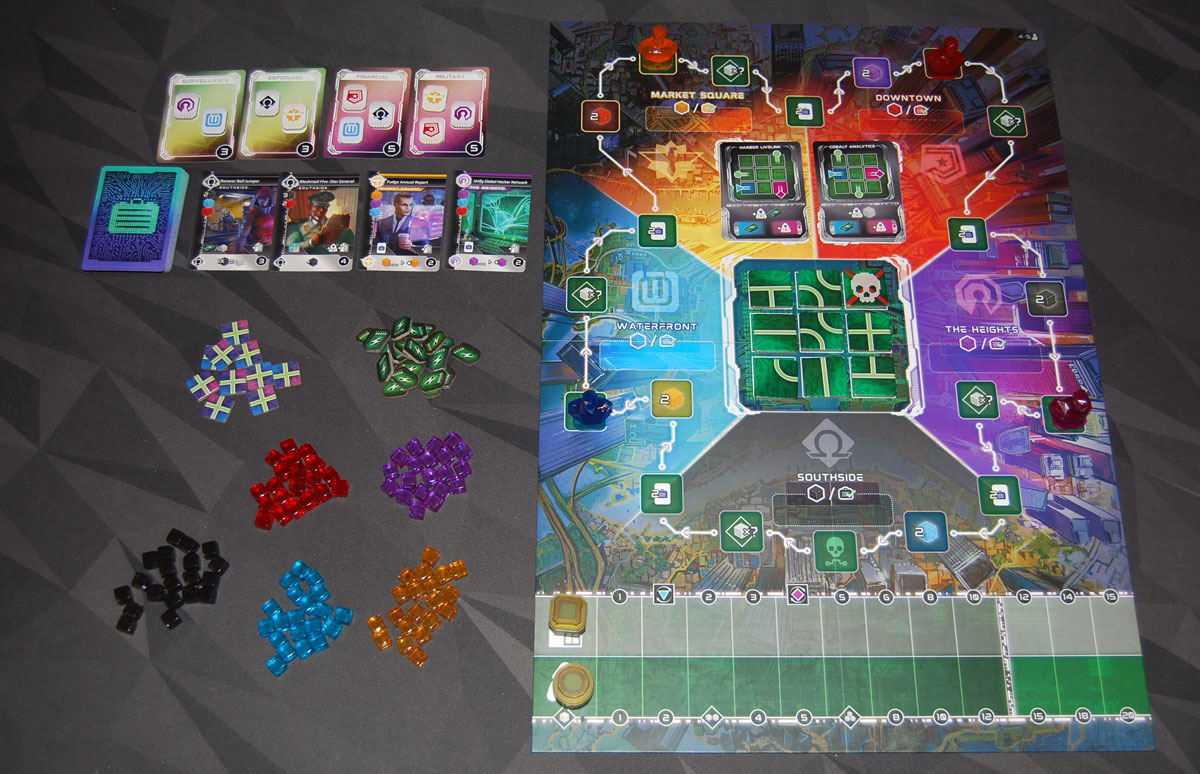
Setup
On the main board, shuffle the 9 PANOP tiles and place them randomly on the center grid. Shuffle the network cards and place half the deck on each space above the grid, face-up. Shuffle the job cards and place them near the board, with 4 cards turned face-up as the “offer.” Place the contract cards face-up nearby, and randomly place the contract tokens on all the spaces on the contract cards.
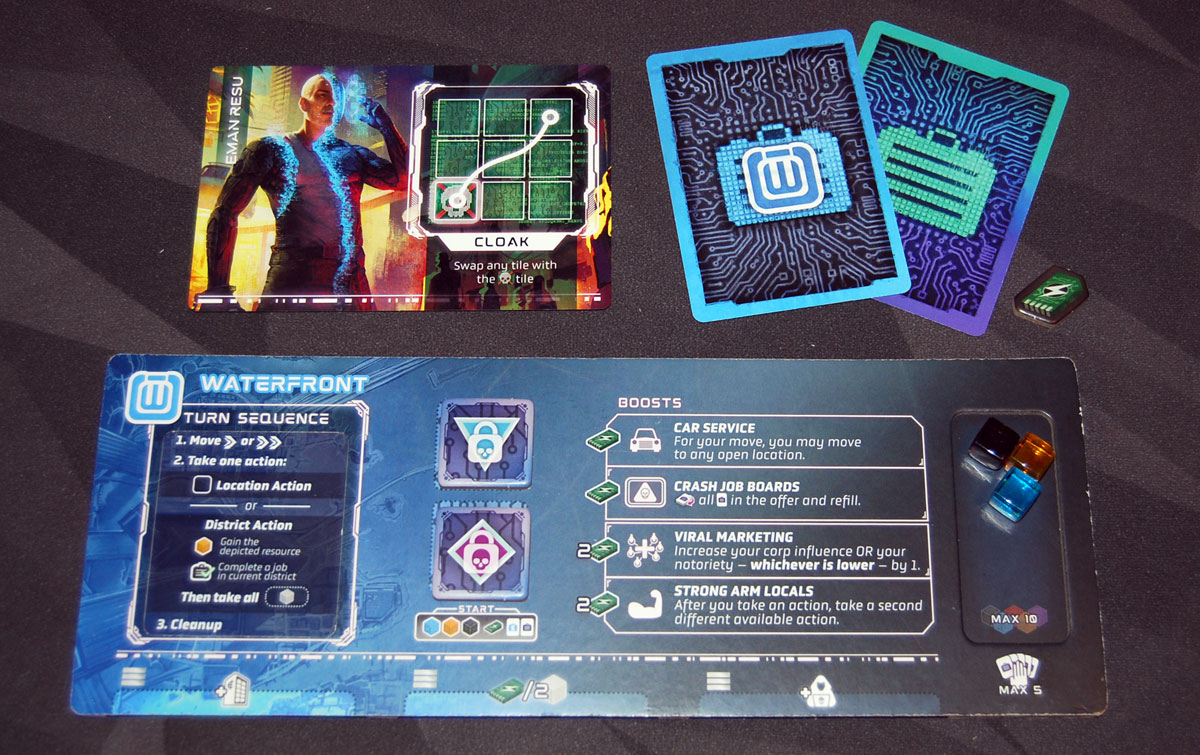
Each player takes a runner board and the tokens associated with it. Your pawn is placed in the “hack” space of the district that matches your color. Your influence and notoriety tokens are placed at the start of the tracks on the main board. You also get 3 resource cubes (shown on your board), 1 credit, a starting job card in your color, and a random job card from the deck.
The player who most recently rode a train is the first player.
Gameplay
On your turn, you must move your runner clockwise along the Metro, and then take an action based on where you stop.
You move 1 or 2 spaces for free, skipping over (and not counting) any occupied spaces. You may also discard any number of cubes and at most 1 job card to move additional spaces.
You may take either a location action (printed on the space itself) or a district action (printed by the district name) for your current district. When you are on the space between two districts, you may take the district action for either district.

Location actions include:
- Draw 2 job cards from the offer or the top of the deck.
- Collect 2 resource cubes of the color shown. (This action is only available on the 4–5 player side.)
- Collect 1 to 3 resource cubes of your choice, based on your position on the notoriety track.
- Attempt to hack the PANOP. (More on this later.)
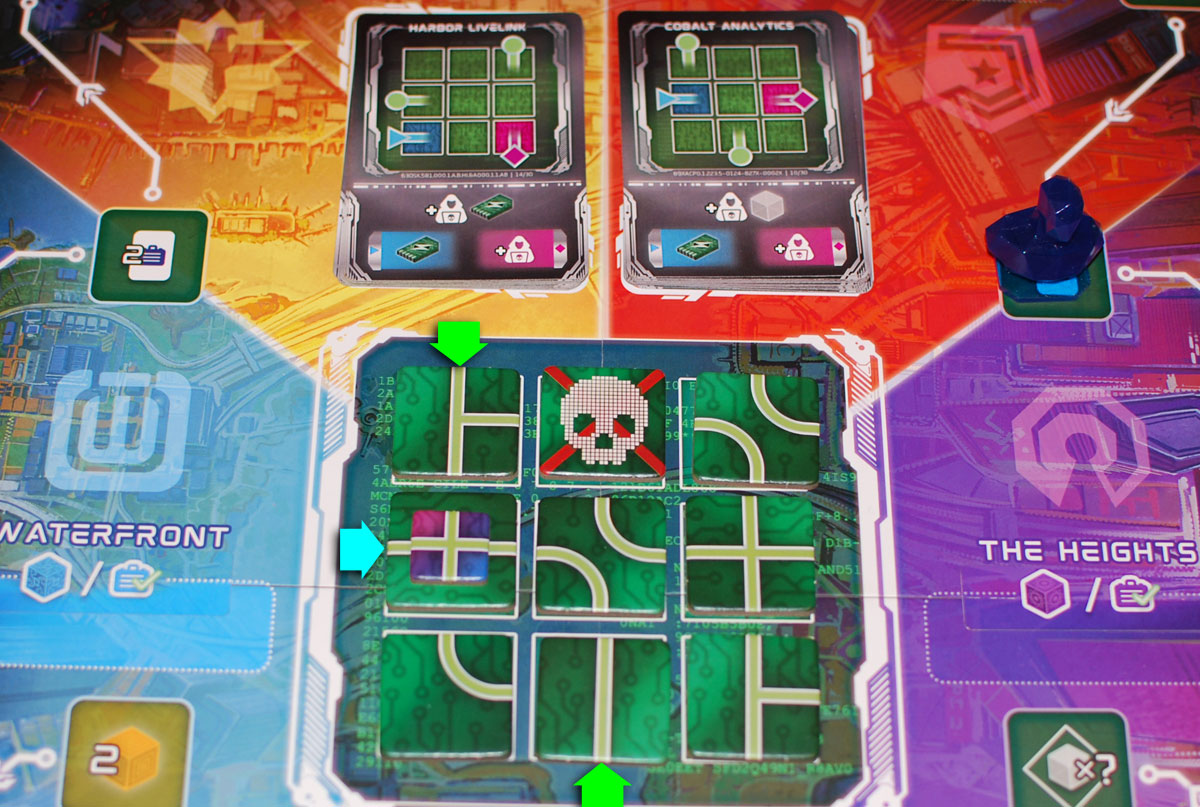
Hacking: To hack the PANOP, you are trying to manipulate the tiles so they match one of the two network cards. Before the hack, you may optionally cycle one of the cards to the bottom of the deck. Each network card shows a 3×3 grid with four nodes attached to the outside edges. To complete a hack, you must create a path that connects the two green nodes. If you’ve upgraded your alpha and/or beta hacks (by advancing on the influence track), you may also connect the blue and/or pink nodes to earn bonus rewards.
You get 2 manipulations for free, and then may discard any number of resource cubes and up to 1 job card for additional moves. Moves include:
- Rotate a tile 90 degrees.
- Swap two adjacent tiles without rotating them.
- Shift a row or column one space and then put the displaced tile at the other end.
- Your character has a hack ability that may be used once per hack action.
- Brute force tokens show a 4-way intersection; if you have any, you may spend them for free to turn any tile (except the skull tile) into a 4-way intersection, and then the token is discarded after the hack action.
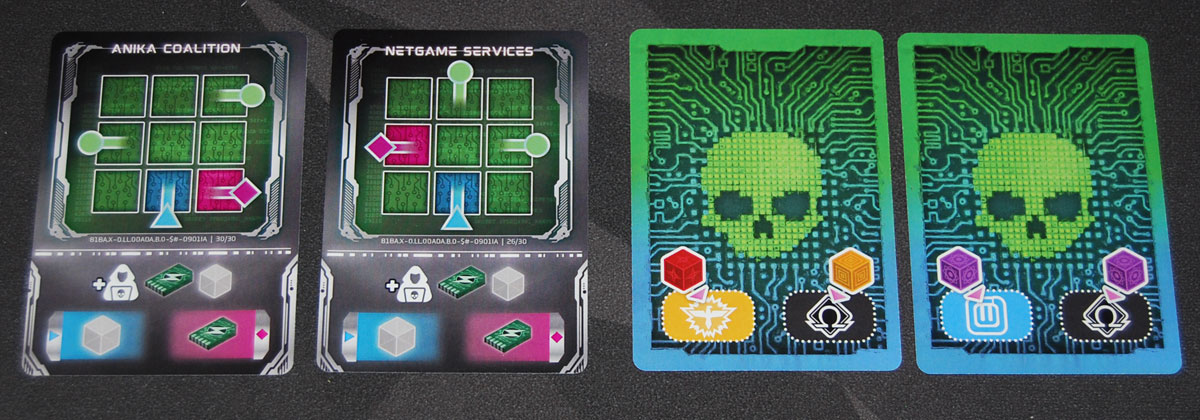
Every hack reward includes moving up one space on the notoriety track, but you may also earn credits or resource cubes. After completing a hack, discard the card face-down: the back of the card shows two resource cubes and two districts—place the corresponding cubes into those district spaces.
A district action is either taking 1 resource of that district’s color, or completing a job from your hand. After taking either district action, you also get to collect any cubes stored on the district space.
Completing a job requires that you’re in the correct district for the job, though freelance cards may be completed in any district. Turn in the cubes shown on the left edge of the card; you may discard 1 job card as a wild resource while completing a job. You gain all the rewards shown near the bottom of the card: you always gain at least 1 influence, but you can also gain credits, resource cubes, brute force tokens, and notoriety, depending on the job.
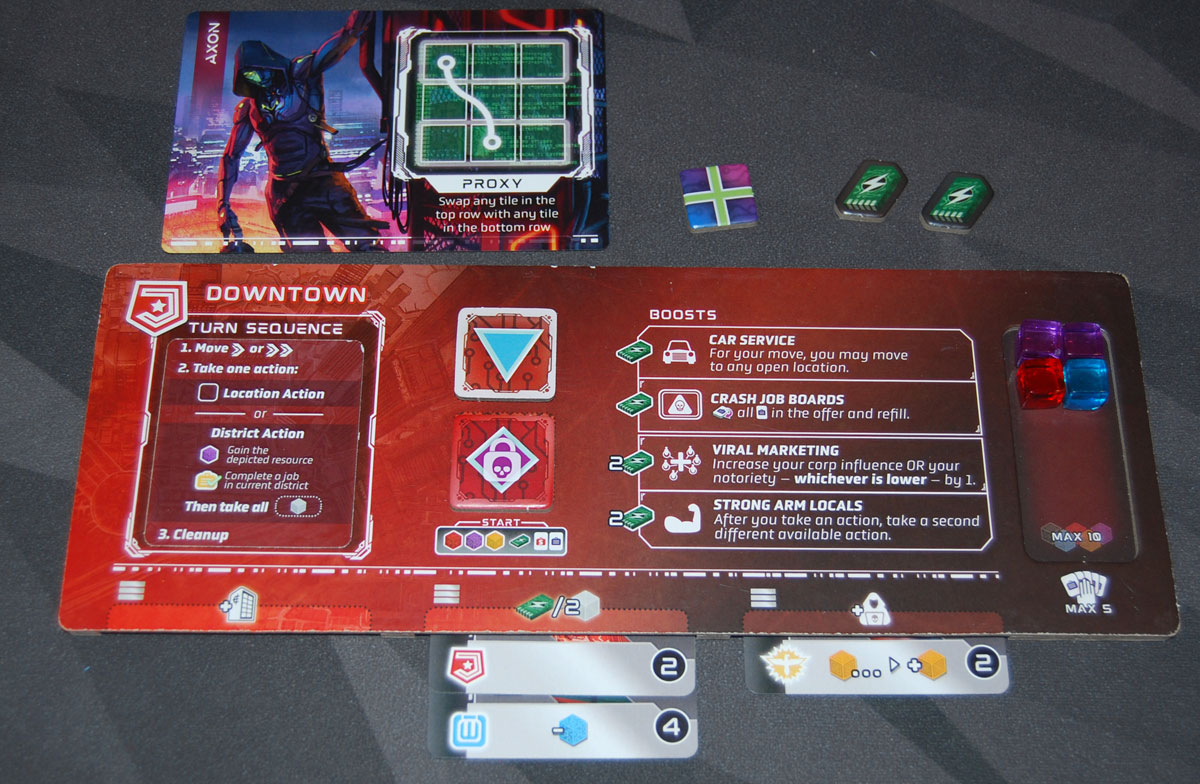
After completing a job, tuck the job card in one of the three slots under your runner board. You may have at most 3 cards in each slot. Tucking a card immediately gives you the bonus for that space—influence, notoriety, or your choice of a credit or two resources. Some job cards also have ongoing effects at the bottom edge of the card—a 1 cube discount of a particular color, giving you additional cubes of a particular color when you collect, or letting you spend 1 cube of a particular color as a wild.
Boosts: You may spend credits during your turn to buy boosts, up to 1 of each per turn:
- 1 credit: Take a car service to any unoccupied space on the board (including staying in the same space).
- 1 credit: Wipe the job offer and refill it with 4 new cards.
- 2 credits: Increase your influence or notoriety, whichever is lower. (If tied, you choose.)
- 2 credits: Take a second different action that’s available in your space. (For instance, you can use the location action, and then do a district action.)
At the end of your turn, you must discard down to 10 resources and 5 job cards, and the next player takes their turn.
Game End
The game end is triggered when any player completes 9 jobs, or passes the end-game line on either influence or notoriety, or when the job deck is depleted. Complete that round (until everyone has had the same number of turns), and then play one more full round.

Each contract will show two or three job colors; to fulfill a contract, you must have completed jobs that match those colors. Each completed job can only count toward one contract—no double-dipping!
Score your points as follows:
- Add up points on your completed jobs.
- Earn points for fulfilled contracts.
- Score for your current position on the influence and notoriety tracks.
- Count the number of completed jobs of your own color (do not count freelance jobs). The player with the most scores 5 points—in case of a tie, all tied players earn 2 points.
- For leftover resources, job cards, credits, and brute force tokens, score 1 point for every 5 things.
The highest score wins, with ties going to the player with the most influence, then notoriety, then completed jobs.
Why You Should Play Metrorunner
I’ll admit: Metrorunner‘s story feels a little odd to me: after describing this dystopian future where the big corporations have finally won, the game doesn’t have you fighting the system. You’re just out to make a buck and get yours. That does match the gameplay, at least: you don’t care which side you’re doing jobs for, as long as you get paid. But in the here and now, where we’re constantly facing the consequences of so-called late-stage capitalism, it feels a little weird to play a game that’s less Rage Against the Machine and a bit more Resistance Is Futile. Still, most of this is abstracted in the game so if you just want a game about collecting colored cubes and scoring points and manipulating a path puzzle, then the story it loosely represents may not bother you much.
The other funny thing is simply that the Metro in Mirror City appears to run only in one direction. While that’s definitely much better for gameplay, it also just makes me laugh. You want to return to the district you just left? Well, buckle in for a long ride and find something to do in the meantime because it’s a long trip around the loop before you’ll get back. Or, you know, you can always call a Lyft. (Just remember that the game isn’t called Lyftrider.)

Story aside, Metrorunner has a nice mix of the familiar and the new, making the game easy to learn but adding some fun twists like the hacking puzzle. Several of the players in my group compared the jobs to Lords of Waterdeep, a worker placement game in which you complete quests by spending different colored cubes. In the same way, you’re collecting job cards that you think you can fulfill, and then figuring out how to get the cubes of those colors. On top of that, a secondary objective is to get sets of jobs that match the valuable contracts, and also complete the most jobs of your own color.
The hacking puzzle isn’t an entirely new idea—there are of course a lot of games that have some sort of path-building elements, like the classic Labyrinth, which uses the “shift a row or column” mechanic. Here, the trick is that you may be trying to connect up to 4 spots, and there’s one dead space that doesn’t connect to anything—plus, you only get 2 moves for free before you have to start spending resources.
For people who like this sort of puzzle, it can be really tempting to just hack as much as you can (though you still have to reach one of the hack spaces on the Metro to take this action). However, there are a few things to pay attention to. First, every successful hack adds resource cubes to the district spaces, which means you’re giving other players an opportunity to grab those if they’re in the right spot, and those cubes can pile up to a pretty big windfall if everyone is too busy doing other actions. Also, if you’re just hacking and not completing jobs, you’ll move up very quickly on the notoriety track and risk ending the game, but then you’re not scoring much for influence.
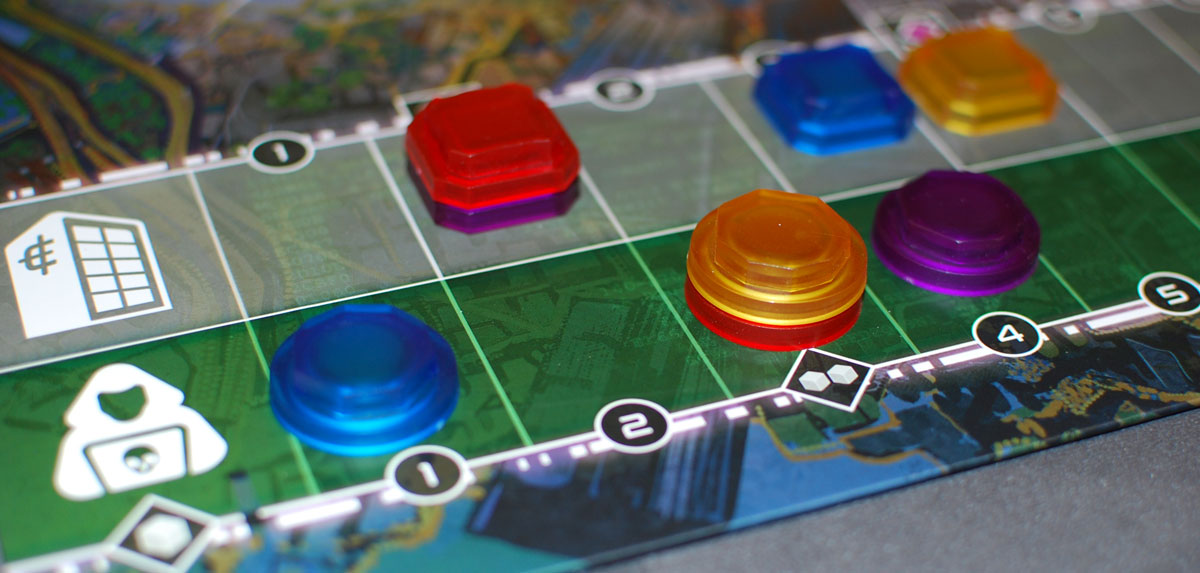
Ideally, you want to be moving up both tracks to maximize your score, but also because there are some synergies there. Increasing your influence unlocks your alpha and beta hack bonuses, so that you can get even more rewards when hacking. Increasing your notoriety by hacking increases your contacts, so that you can get more resource cubes when taking that action. Figuring out that balance of jobs and hacking is key.
I do wonder if it’s possible to rush the end-game through hacking, since it’s faster than completing jobs. You don’t have to spend any actions collecting cubes for jobs and picking up job cards—you can just zip around and hit those hack spaces. (Of course, you do need some resources to move more quickly, whether that’s spending cubes or using credits for the car service.) The trick is whether you can score enough on notoriety alone (it maxes out at 20 points) to overcome whatever your opponents are earning for jobs and contracts.
It may be possible to try to rush the jobs side, if you complete smaller jobs, but the smaller jobs are less efficient for earning points, and with only 4 jobs on the offer you can’t always count on finding the jobs you need. The contracts are randomly determined at setup, with 3 bonus points for the 2-job contracts and 5 bonus points for the 3-job contracts. So far in the games I’ve played we’ve never had two tokens of the same color on the same contract, but it’s certainly possible. Since each player has an incentive to focus on contracts of their own color, this randomized setup can feel unfair: if my job color happens to be on the 5-point contract, doesn’t it make it easier for me to grab the majority bonus and fulfill contracts at the same time? Maybe, but then it might also mean that my color gets snapped up quickly from the job offer as soon as it appears.
I like the various choices you’ll have to balance throughout the game: small jobs you can complete quickly vs. higher-paying jobs that take time to save up for; hacking vs. completing jobs; completing contracts vs. going for the majority bonus. Even choosing which slot to tuck a completed job for the bonus reward can be a tricky choice—do you want some quick resources to help with the next job, or should you boost your influence or notoriety? Credits aren’t always easy to come by and are often quickly spent, but those boosts can be very powerful. The last boost, “strong arm locals,” lets you take a second action on your turn, and most of my group tried to save up credits for eventful turns. It’s incredibly satisfying to hack the PANOP, and then spend 2 credits to use the resources you gained from the hack to complete a job, and then grab all of the cubes from that district (including one that was added from your own hack!).
If you like the idea of a game that mixes resource management with a tile puzzle, Metrorunner is worth checking out. It’s a solid worker-placement style game that provides some nice tension between the different paths to victory.
For more information or to make a pledge, visit the Metrorunner Kickstarter page!
Click here to see all our tabletop game reviews.
![]() To subscribe to GeekDad’s tabletop gaming coverage, please copy this link and add it to your RSS reader.
To subscribe to GeekDad’s tabletop gaming coverage, please copy this link and add it to your RSS reader.
Disclosure: GeekDad was loaned a prototype of this game for review purposes. In addition, Thunderworks Games has purchased ads on GeekDad for the Kickstarter campaign, though those funds do not come to me personally.

